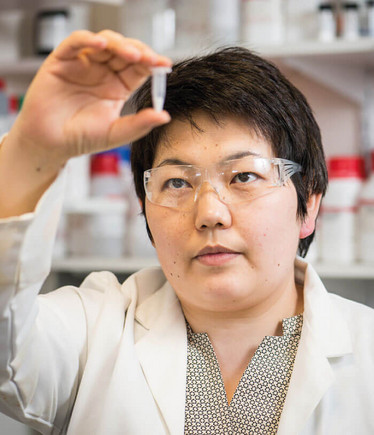
Get Your Coat!
A coating of silica could increase the thermal stability of crucial vaccines

Researchers at the University of Bath, UK, are working on a novel vaccine that uses microscopic silica cases to protect the tuberculosis (TB) antigen and vaccine adjuvant from heat damage. Only one licensed vaccine for TB exists, but variable efficacy, particularly in areas of high disease burden, is cause for concern.
“The main drawback of the Bacillus Calmette–Guérin TB vaccine is that many laboratory strains of the TB virus have lost their “wild” traits that can help trigger our immune system to raise an effective response. So an alternative that can mitigate this issue is needed to help protect patients,” explains Jean van den Elsen, Professor of Biochemistry at the University of Bath.
Ensuring the thermal stability of vaccines in the supply chain is essential – but that presents another issue. “Cold chain works well to prevent vaccines from spoiling. However, it relies on having an uninterrupted electricity supply to support supply chain infrastructure,” adds Asel Sartbaeva, a lecturer in the Department of Chemistry, also at the University of Bath.
According to estimates by UNICEF program workers, interruptions in supply cold chain account for 40 to 60 percent of wasted vaccines in developing countries, which ultimately leads to more deaths from vaccine-preventable diseases.

The technique developed by a team led by Sartbaeva and van den Elsen is dubbed “ensilication.” In essence, it creates a silica coating around individual proteins inside vaccines, preventing them from unfolding. Unlike other encapsulation techniques, the silica coating is a perfect fit – the silica network is grown directly onto proteins, thereby acting as tailor-made protective sheaths.
“The longest experiment we have conducted was about a year long. We observed that there was very little change in ensilicated protein structure when stored at room temperature during this period,” says Sartbaeva. “We would need longer experiments to be absolutely sure, but we’re confident that the method will increase shelf-life and help reduce vaccine wastage.”
The group are now exploring several new avenues for ensilication. They are working on the ensilication of diphtheria and also hope to apply the technique to pertussis (whooping cough) vaccine. The team is also interested in coating bacteriophages. “Bacteriophages are an integral factor in antimicrobial resistance – another global problem. With ensilication we think we will be able to combat AMR in the future,” says Sartbaeva.
Finally, it may also be possible to ensilicate antibodies, so they no longer have to be frozen for storage and transportation, opening up a whole other realm of possibility.
After finishing my degree, I envisioned a career in science communications. However, life took an unexpected turn and I ended up teaching abroad. Though the experience was amazing and I learned a great deal from it, I jumped at the opportunity to work for Texere. I'm excited to see where this new journey takes me!



















